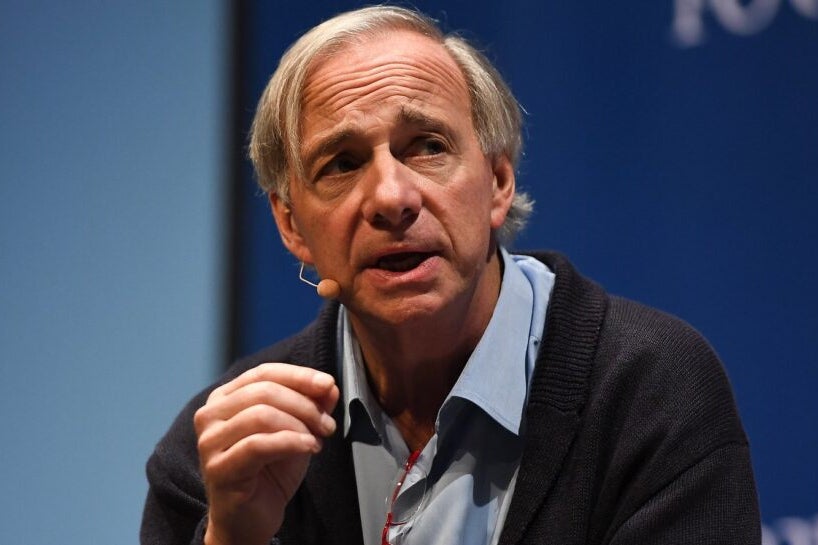Ray Dalio Advocates for Trump’s Tariff Reversal as Path to US-China Cooperation
Billionaire investor Ray Dalio has endorsed former President Donald Trump’s proposal to reverse certain tariffs on Chinese goods, arguing the move could foster US-China economic cooperation and reduce trade imbalances. In a recent analysis, Dalio suggested that strategic concessions might ease tensions and address the $382 billion US trade deficit with China. The hedge fund founder’s stance comes as both nations navigate complex economic negotiations ahead of the 2024 US election.
The Economic Rationale Behind Dalio’s Tariff Argument
Dalio, founder of Bridgewater Associates, contends that Trump-era tariffs—while initially designed to protect US industries—have inadvertently strained bilateral relations and contributed to inflationary pressures. He points to 2023 Bureau of Economic Analysis data showing tariff costs added 0.5% to US consumer prices annually since 2018. “Economic warfare rarely produces clear winners,” Dalio stated. “A recalibration of trade policies could create breathing room for more substantive negotiations.”
Key statistics supporting Dalio’s position include:
- US imports from China declined 13% post-tariffs (2018-2022)
- American manufacturers faced 25% higher input costs for tariff-affected components
- China’s retaliatory tariffs impacted $110 billion in US agricultural exports
Divergent Views on Tariff Strategy
While Dalio champions tariff reductions, some trade experts maintain a harder line. Dr. Linda Zhang, senior fellow at the Peterson Institute for International Economics, cautions: “Unilateral concessions without structural reforms in China’s state-subsidized industries could perpetuate market distortions. The 2021 Phase One trade agreement’s unmet purchasing targets demonstrate verification challenges.”
Conversely, National Association of Manufacturers CEO Jay Timmons supports Dalio’s approach: “Our members need predictable access to global supply chains. The current tariff regime creates unnecessary friction—we’ve seen 37% of manufacturing firms relocate portions of production overseas solely to circumvent these trade barriers.”
Potential Impacts on US-China Economic Relations
A tariff rollback could reshape the economic landscape in several critical areas:
Supply Chain Reconfiguration
Many multinational corporations adopted “China Plus One” diversification strategies following tariff implementation. A 2023 McKinsey survey revealed 68% of Fortune 500 companies established alternative Asian production bases. Reduced tariffs might slow this trend, though experts believe diversification momentum will continue given geopolitical uncertainties.
Technology Sector Implications
The semiconductor industry presents a complex case study. While chip imports face separate export controls, tariff reductions on consumer electronics could lower costs for US device manufacturers. However, the White House remains concerned about sensitive technology transfers, suggesting any tariff adjustments would likely exclude strategic sectors.
Agricultural Market Recovery
US farmers stand to benefit significantly. Before tariffs, China purchased 60% of American soybean exports—a trade flow that plummeted to 30% by 2020. “Rebalancing agricultural trade could inject $15-20 billion annually into rural economies,” estimates USDA Chief Economist Seth Meyer.
The Political Calculus of Trade Policy Shifts
Dalio’s proposal enters a charged election-year environment where China policy remains contentious. Recent polling shows:
- 52% of voters support tougher China trade measures (Pew Research, 2024)
- 67% of business leaders favor tariff reductions (U.S. Chamber of Commerce survey)
- 39% of Americans view China as an adversary (Gallup, 2023)
Political strategists note that while tariff relief might ease inflation—a top voter concern—it risks appearing conciliatory toward a geopolitical rival. “The administration must thread the needle between economic pragmatism and national security priorities,” observes Georgetown University professor Thomas Wright.
Future Outlook and Strategic Considerations
As economic heavyweights like Dalio influence the discourse, several scenarios may emerge:
- Limited Tariff Reductions: Targeted relief for consumer goods while maintaining tech/industrial protections
- Reciprocal Agreements: Phased reductions tied to Chinese market access concessions
- New Negotiating Frameworks: Broader talks addressing subsidies, IP protections, and cyber issues
The coming months will prove critical as both nations weigh short-term economic relief against long-term strategic positioning. With global growth projections slowing to 2.7% (IMF, 2024), cooperative solutions may gain traction despite political hurdles.
For business leaders navigating these uncertain waters, staying informed on trade policy developments remains essential. Subscribe to our trade policy newsletter for ongoing analysis of US-China economic relations and actionable insights for your organization.
See more Business Focus Insider Team

